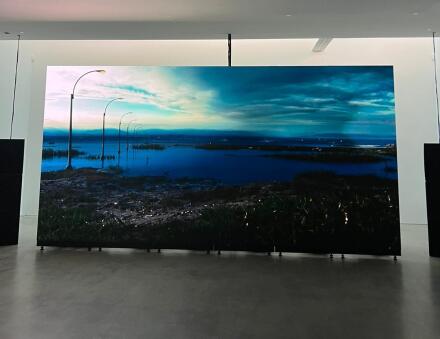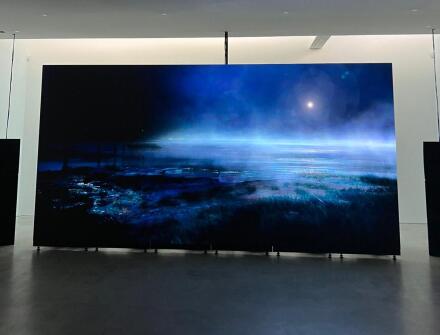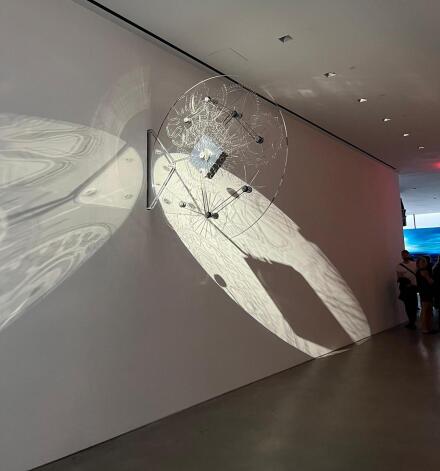
Philippe Parreno, Hertzian Tales (Installation View), via Art Observed
Philippe Parreno takes over Gladstone Gallery this month with a body of work that continues to mine notions of non-human intelligence, technology and life. The show, Hertzian Tales, marks the most recent manifestation of his ongoing contemplation of art as both sentient and sensual.
New and recent works perform an intricate choreography in reaction to multiple stimuli, some as ineffable as the slow melt of time or invisible shifts in barometric pressure, others as shocking and urgent as climate change. The transparent acrylic Clock (2020) with its multiple faces animated by gears controlled by a DMX box, adheres to the forward propulsion of passing minutes, yet stutters and shifts according to changes in the atmosphere. The video, The Owl in Daylight (2020-2023)—never before exhibited in the U.S.—comprises a CGI-animated waterscape in which light and vapor and a fugitive city appear and disappear algorithmically in concert with actual climactic fluctuations. Part weather station, part imaginary world, this digital work pays homage to the last, unfinished, eponymously titled novel by sci-fi author Philip K. Dick, situated on an alien planet that lacks sound and considers the cacophony of Earth as a kind of heaven.

Philippe Parreno, Hertzian Tales (Installation View), via Art Observed

Philippe Parreno, Hertzian Tales (Installation View), via Art Observed
The video’s generative soundtrack was conceived by composer and sound engineer Nicolas Becker to blend naturalistic noises with abstract echoes of our tech-driven landscape. An additional layer of sound interacts with the video for its current manifestation in the gallery. The voice of actor Charlotte Gainsbourg (with whom Parreno is currently working on a film project) responds to the natural forces depicted on the screen, becoming one with the water, the wind, and the rain. The non-narrative voiceover is determined by a computer program that syncs sound with the mutable components of the video. Using the Markov model, which assumes that all future states depend only on the current state, the algorithm allows endless permutations. Parreno’s heliostat sculpture, which typically captures the movement of sunlight to then reflect it onto a stationary point, here follows the sound of Gainsbourg’s voice, sending a ray of solar energy onto the screen in response to it. Like the beam of a film projector in a cinema, this light alludes to an unfolding narrative. The heliostat, the voiceover, and the video are synchronized like a mechanical ballet, a multi-part automaton recounting a lyrical, esoteric story.
The show closes October 28th.
– A. Mannekin
Read more:
Gladstone Gallery [Exhibition Site]



